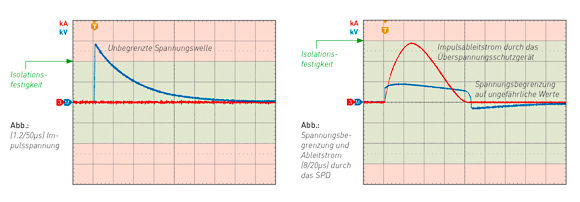
| DE | EN | Contact | About us | Terms of Business | Imprint | Privacy & Cookies | Help | Newsletter | Registration | Login | |
 |  |  |  |  |  |  |  |  |  |  |  |
| Home > News > Case Studies > Power Supplies > Overvoltage protection with SPDs: Tips for protecting systems and equipment from surges | |||||||||||
Overvoltage protection with SPDs: Tips for protecting systems and equipment from surgesSchukat gives tips for protecting systems and equipment from surges
Transient overvoltages, or power surges, can damage electronic components and lead to system outages and downtime. Schukat explains how surge protection devices from Citel can help.The problemWith increasing industrial automation, the number of products susceptible to interference is also growing. Technical systems are becoming more and more complex and contain devices that are getting smaller and more powerful and, due to their increasing functionality, also more vulnerable. For example, power supplies, such as the switching power supplies used in industrial systems, can dissipate the high pulse energy caused by surges only poorly or not at all. Many failures due to defective power supplies can be traced back to transient overvoltages. Possible harm to electronic equipment• temporary disruption to operations / undefined system operation The solutionProtecting facilities against failures and avoiding potentially expensive interruptions to operations is essential. Effective protection is offered by a surge protection device, or SPD, a device designed to protect against voltage spikes. How an SPD works:• Based on varistors or gas-filled spark gaps, or a combination of both (optimal).
• Protection level is matched to the dielectric strength of the unit to be protected: coarse, medium or fine protection. Specifications according to IEC standard 60364: protection level of max. 2.5 kV for surge protection devices at the input of 230V or 400V networks. Classification of SPDs:• Type 1 Lightning conductor: Depending on the design, used upstream of the meter or directly behind it, where the highest currents have to be discharged if lightning strikes directly. At SchukatAt Schukat electronic, we offer a selection of SPDs from manufacturer Citel direct from stock. Citel develops overvoltage protection components such as gas-filled spark gaps, gas arresters and surge protection devices. With its test laboratories in France and China, surges of up to 100kA can be simulated, and products can be checked and tested accordingly. |
|

